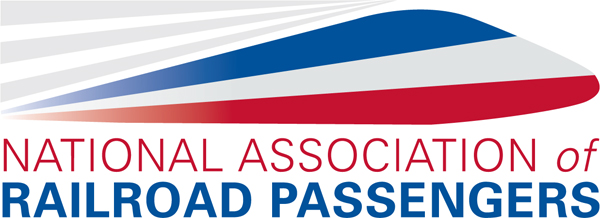Hotline #750
December 4, 1992
New Viewliners are on the way after the Amtrak board's approval on December 2 of an order of 50 single-level sleeping cars from Morrison-Knudsen for about $100 million, with an option on 50 more sleepers. The cars will be delivered in 1995 from plants at Pullman, Ill., and Hornell, N.Y.
Federal Railroad Administrator Gil Carmichael, commenting to the Amtrak board on reduced equipment overhauls in fiscal 1992 and 1993, said, "This worries me. This can't go on too long."
Board member Paul Weyrich said he supported management's recommendation to spend $250,000 to convert the Metroliner conference car into a first-class lounge for the Adirondack or Old Dominion. President Claytor said X2000 tests are going well and high-speed tests would start in about a week.
The board approved the sale of the Kingston, R.I., station to the state DOT. The fire-damaged station is to be repaired with $500,000 in state and local funds and $150,000 from Amtrak, which will use the station rent-free.
The Postal Service believes the RoadRailer tests it has conducted with Amtrak have been a success, according to the Journal of Commerce. They are examining routes to serve with the equipment. Amtrak said it would like to do 100,000-mile endurance tests on the RoadRailers at the FRA test facility in Pueblo, Colo., before deciding to order the truck-rail hybrids.
The best on-time railroad for Amtrak in October was Central Vermont at 93.5%; the worst Norfolk Southern at 53%. The best long-distance train was City of New Orleans at 87%; the worst was California Zephyr at 8%. Fiscal 1992 total ridership was 21.4 million, down 3.1%. But September ridership was up and Milwaukee line ridership was up 40% then.
President-elect Clinton's cluster coordinator for transportation is Federico F. Pena, who was Denver's mayor from 1983 to 1991 and an ardent supporter of the city's new, big airport. Our earlier report that the job went to Neil Goldschmidt was wrong.
NARP has been working with environmental groups for a good rail component in any Clinton public works plan.
Three environmental groups jointly wrote all state DOT's warning them of the need to comply fully with the Clean Air Act and ISTEA. An article in the weekly newsletter of the American Association of State Highway and Transportation Officials warned, "Environmental Litigation May Threaten Transportation Shut Down."
The Pennsylvania legislature passed both the double-stack clearance bill and money for the second Pennsylvanian last week. The governor likely will sign both. The Pennsylvanian bill provides $10 million to buy two train sets for a route from Beaver Falls to Pittsburgh, off the main line to Vandergrift, back onto the main line to Johnstown and Harrisburg, then -- as with Amtrak's July report -- over to Reading, Allentown, and Easton, and theoretically to New York.
Controversy in the Alabama executive branch over appropriated Gulf Breeze money was resolved, so the train is safe for now. But to assure continuation beyond July, the legislature must approve more funding before its adjournment, which is usually in early May. The train's revenue trends are positive.
The Central Artery Rail Link Caucus membership now includes 42 of the 200 members of the Massachusetts House and Senate. The state's new transportation secretary, James Kerasiotes, was quoted in the December 2 Boston Globe as being "intrigued" by the rail link concept. That day's Portland Press Herald contained a big story under the headline "Rail link supporters think Weld should help."
Greyhound moved into Boston South Station last week.
Metrolink service will be extended on December 7 from Pomona to Claremont on the line that will eventually reach San Bernardino. Washington Metro will energize Green Line tracks between Fort Totten and Greenbelt though no revenue service start-up date has been announced.
